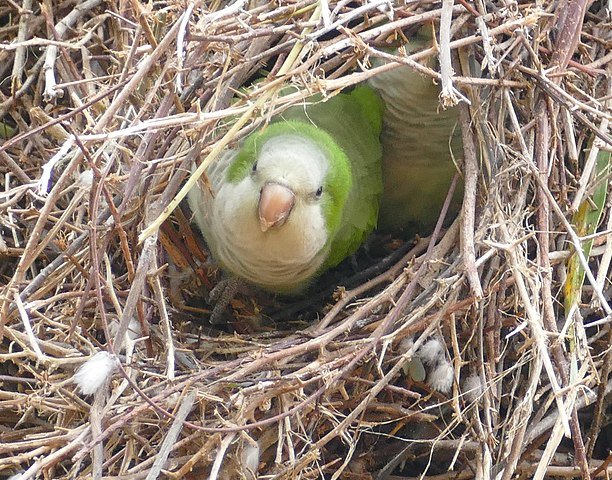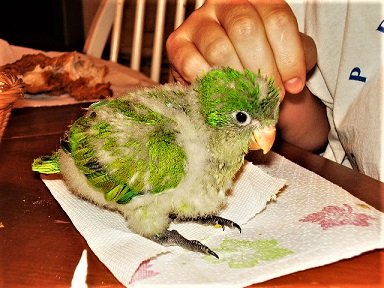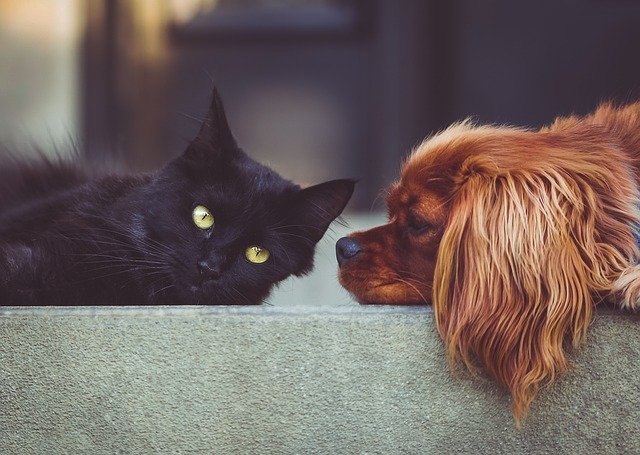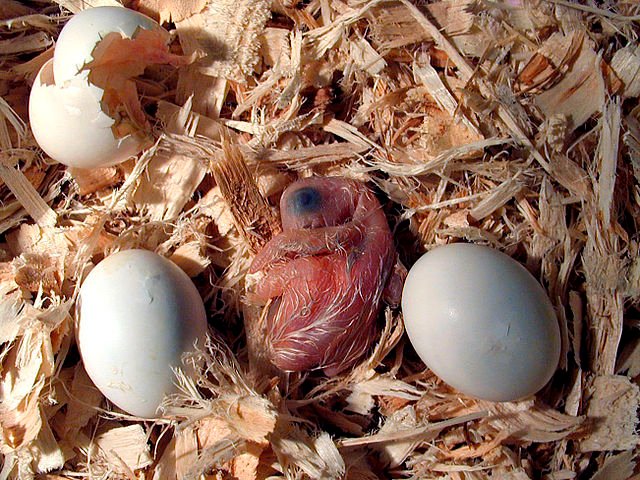Baby Quaker also look up to his parent for all his needs as that is what all babies do. But are you ready to take care of your little birdie? Let us make a general checklist of all the initial care a baby Quaker might need. Rest, it is all on-the-job training.
Baby Quaker’s home requirements
A plastic storage bin, a wooden box or a glass fish tank are the best options for making a brooder for baby Quakers. Clean the box thoroughly before placing Quakers inside. Perching comes naturally to the whole Quaker parrot breed, so the height of brooder shall be kept at least 14 inches. If a box with such height cannot be provided to the baby Quakers, it is advised to keep the brooder covered with only little openings for ventilation. A wooden cover with some punched holes can serve the purpose.

The size of brooder depends largely on the number of baby Quakers that need housing. It is recommended to provide 0.75 square feet of area per bird up to the age of 6 weeks. Afterward, an area of 1 square foot per bird would be adequate for their healthy growth. Baby Quakers can be shifted to the normal cages at the age of 10 weeks.
The placing of the brooding box plays an important role in the safety of baby Quakers. Keeping the box out of reach of predators is essential. Keep in mind that your other pets like cats and dogs are also predators for these newly-born birds. Also, ensure to keep the box away from heavy traffic areas of your house.
Maintaining a baby Quaker’s hygiene
Keeping the baby Quaker’s surroundings clean and hygienic is essential to keep the baby Quaker healthy. The babies are good at creating a mess in the brooder, they poop big time. They are also messy with food and water.
Maintaining a clean environment in the brooder, therefore, becomes all the more important. Dirty surroundings serve as a breeding ground for disease-causing bacteria. If you are using cardboard boxes, they need to be changed daily as they will become wet with the Quaker’s droppings and water splashed out from the water dish. Litter inside the brooder needs to be replaced frequently throughout the day.
Hand-feeding the baby Quaker
Since Quakers at this stage of life cannot eat their food on their own from a food dish, they need to be hand-fed until they grow up. Feed them the store-bought formula containing all the nutrients with the help of a tube or syringe made for the purpose. For newly-born Quakers, commercial formulas are the healthiest diet one can provide for. One to two tablespoon of the mix is sufficient for a single meal. Two meals per day are appropriate for Quaker babies.

For knowing the exact amount of feeding per meal, it is recommended to weigh the Quaker baby using a gram scale regularly. Maintain a healthy weight as recommended by the vet according to the growth stage of Quaker.
Keeping them full for the day and emptying overnight is preferred except in case the bird is under the age of 10 days.
Hand-feeding is an excellent opportunity to spend time with the little Quaker and develop a strong bond.
Quaker parrot growth stages
Just like human beings, Quaker parrots also go through several growth stages during their entire life-cycle. Understanding these stages will throw some light on how to care for them.
Neonatal and Juvenal stage
When born, Quaker parrots are completely dependant on their parents for all their survival needs. Their feathers grow between the age of four to six weeks. And this growth corresponds with their physical growth too. They are fully grown by the time their feathers form. They start exploring the world with their beak at this stage.
After these initial six weeks, Quaker species start developing social skills. They start interacting a little with their parents. The bird starts exploring new places to hide, things to play with, etc. At this stage of their life, they can be introduced with toys that stimulate their senses. Such toys help in their brain development process. Since Quaker parrots are extremely curious creatures, it is recommended to introduce them with new toys every few weeks to keep them from getting bored. Colorful toys made from natural substances like untreated wood are the safest option to keep Quakers from inhaling toxins.
Quaker parrot Adult stage
Quaker parrots enter the Adult stage between the age of two to four years. At this stage, their hormonal activity increases substantially. They are grown-up now to become an independent creature. Quakers can be shifted to their cage from the brooder at this stage of life. They can carry out their daily activities with much less help from their owners. They also start interacting with other family members, which is again a good sign of mental growth. It is advised to make the Quaker baby interact with more people in the family to protect him from a mental block in the absence of Quaker owner.
Quaker parrots enter the age of maturity after this stage of life growth. They are handled normally as adult Quakers then.
Regular medical check-ups
Just like human babies, Quaker babies also need proper medical care. It is essential to get a regular medical check-up done to ensure the bird’s good health. Make regular trips to the vet a routine from the beginning. Prevention is always better than cure and these trips would be the first preventive measure towards it.
Maintaining constant environmental temperature
The baby Quakers are susceptible to illness even with a slight change in environmental temperature. A constant temperature is required to be maintained inside the brooder. This can be done with the help of a heating pad or a 250-watt infrared heat bulb or lamp. Most Quaker owners opt for bulbs. Red light is recommended instead of white as white light hinders the sound sleeping of the bird. A grown-up Quaker can tolerate mild changes in temperature.
Some interesting video of Quaker parrot Hatching from an egg. 🙂
Another Youtube Video about Handfeeding baby parrots:



